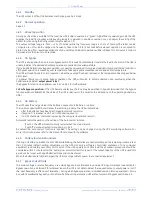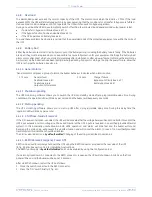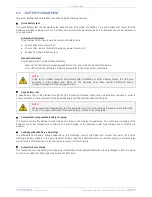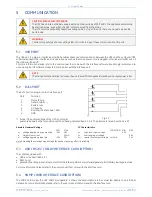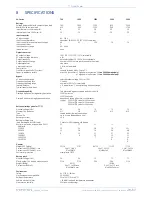
Critical Power
Modifications reserved
Page 21/25
GE_UPS_OPM_VHU_0K7_3K0_XUS_V011.docx
Operating Manual
VH700 UL, VH1000 UL, VH1500 UL, VH2000 UL & VH3000 UL
4.6
BATTERY MANAGEMENT
Maximum battery life and reliability are obtained by the following features:
Quick battery test
The quick battery test checks whether the batteries and their wiring are healthy. If a quick battery test shows that the
batteries are close to being worn out, a 'battery bad' alarm will be generated (see 4.4.9). Batteries have to be replaced as
soon as possible.
Automatic battery test
The VH Series UPS conducts periodic automatic battery tests:
5 hours after manual switch-on
5 hours after return of mains following any power failure, and
30 days from the last battery test
Manual battery test
A quick battery test can be initiated manually
- either via the front panel, by pressing pushbutton ‘I’ for 5 seconds during normal operation,
- or via UPS monitoring software. For details please refer to the manual of your software.
NOTE
If the test is started manually immediately after installation or after a power failure, the UPS may
generate a false 'battery bad' alarm as the batteries have been (partly) discharged during
transport/storage or during the power failure.
Deep battery test
A deep battery test, to be initiated through the UPS monitoring software, checks the actual battery capacity in order to
ensure accurate runtime prediction. During a deep battery test the batteries will be discharged.
NOTE
When executing a deep battery test the available runtime in case of mains failure may be shorter than
normal. Don’t execute this test if reduced battery runtime is not acceptable.
Temperature compensated battery charging
This feature adjusts the battery charge voltage according to the ambient temperature. As a result poor charging of the
batteries under low temperature conditions and overcharging of the batteries under high temperature conditions are
avoided.
Load dependent battery-end-voltage
The allowable final battery voltage depends on the discharge current: the higher the current, the lower the 'end-of-
discharge' battery voltage. In this way maximum battery capacity is obtained without over-discharging. Over-discharging
would result in shortened service life and failure to recover normal capacity.
Automatic boost charge
This feature reduces the battery recharge time considerably: totally depleted batteries will be recharged to 90% in approx.
3.0 hours, provided that discharging took place at 100% load.












